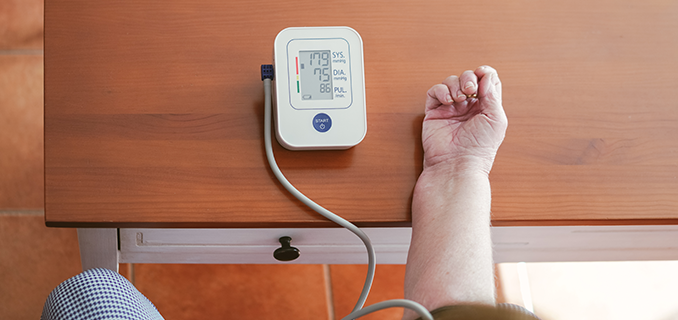
While convincing patients of the value of a Remote Patient Monitoring (RPM) program is an accomplishment, it is often only the first hurdle for your practice. You will also need to remain diligent in finding ways to empower your patients to stay involved and positively benefit from it.
As such, you have to go beyond that initial appointment where you discuss RPM. Your patients may start off strong, then they taper their efforts for attending to their care without informing you directly. If this occurs, knowing ways to motivate them to continue with your health plan will be essential. Depending on your particular patient’s circumstances, consider using one or more of the following suggestions.
Identify Any Impediments
Your patients are more than likely a variety of ages with differing health conditions that need constant monitoring. Understanding them a little better can make all the difference in how you approach the initiation and continuation of an RPM program.
At each appointment, ask your patients how the process is going for them. Gain a sense of their willingness and ability to continue an RPM program as part of their self-health management practices and identify anything that may be holding them back. Potential issues may be the costs involved, discouragement over hospital stays or treatments, new technology, or even personal data privacy. Once you know what it is that is impeding your patient from staying involved, you can address it in the best way possible.
When it comes to older patients, in particular, you will often have to walk a fine line between personal face-to-face attention and online involvement. It’s a dichotomy of sorts, and if you think about your own family members and how they view modern conveniences, you may realize this even more so. It’s also about empathy, that is, placing yourself in their shoes for a moment. Doing so can help you understand where their hesitation lies and how best to proceed.
Instill Accountability
Explain that they have a central role in their own health management. You can’t be with them 24/7, so let them know you depend on them to take steps that can help you help them. Reaffirm the value in being able to monitor their health between visits, keeping as many surprises at bay, and reduce rehospitalization rates.
For some patients, ask them to keep notes and bring them to the next appointment. This keeps them accountable for staying involved in the process. Patient accountability can be a great motivator that often results in better health outcomes. But for other patients, asking them to do an additional task may be the impediment that keeps them from continuing with the program.
Promote the “Team” Mentality
When discussing a patient’s healthcare, promote a “team” mentality. You can do this by presenting it as the patient’s personal health care team, a collaboration between you, the patient, and, if you have one, the RPM services provider.
Working in tandem, explain how you need them to monitor their own health in between appointments as part of this team. Emphasize how important their role is in managing their health conditions but also let them know they are never alone in the process.
Motivate with Self-Management Support Tools and Techniques
RPM is a part of the health management process and may need the assistance of various techniques or tools to keep patients involved. There is a variety of these available. Each patient is unique and may be motivated, differently, by lists, deadlines, or step-by-step planning. While you don’t have a lot of time to get to know all your patients to this level, you can offer suggestions and let them choose what will work best for them.
The most common self-management support techniques and strategies to include are as follows.
- An initial assessment of a health condition
- Goal-setting for that condition
- Action steps for the patient
- Potential roadblocks and problem-solving strategies
- Scheduled follow-ups
You may want to create paperwork that you can hand out (or email) to assist them in getting started and staying involved. An example of this is tracking worksheets that track medications, therapies, and vitals, as well as health outcomes. These worksheets can be reviewed at scheduled appointments. These worksheets can also provide the patient with a sense of where they are in their health.
Such interactive aids can help patients develop better skills for managing their health, form positive habits, and feel like they are indeed staying involved.
Provide a Framework for Review
While patients can falter when it comes to self-care and behavior modification, RPM provides a way to keep them engaged with real-time data. It will also help if you provide each patient with a framework in which to view the real-time data so they can begin to recognize any patterns or anomalies.
Show how the data from RPM can benefit their self-care habits. For example, spikes in glucose levels can alert them to examine their recent actions and what they consumed and to learn from that. Guide them to refer back to any set goals and problem-solving solutions if necessary.
Lean on Your RPM Services Provider
Partnering with an RPM services provider that makes your patients feel comfortable and supported is highly beneficial and time-saving. Personal care coordinators, like those with Medek RPM, can continue to work with your patient, encouraging and motivating them along the way.
Patients often feel powerless in managing a health condition beyond taking medications as prescribed. Providing them with access to remote patient monitoring can make them feel like they are contributing more and not being relegated to a passive role any longer.
Find Out How You Can Partner with Medek RPM Today
Medek RPM takes the headache and confusion out of the process by adding state-of-the-art technology and highly trained and dedicated clinical staff. Medek RPM has no upfront cost, and managing chronic patients is easier than ever. Earn up to $2,600/year/patient in additional revenue. Start a conversation with a Medek Representative today!





